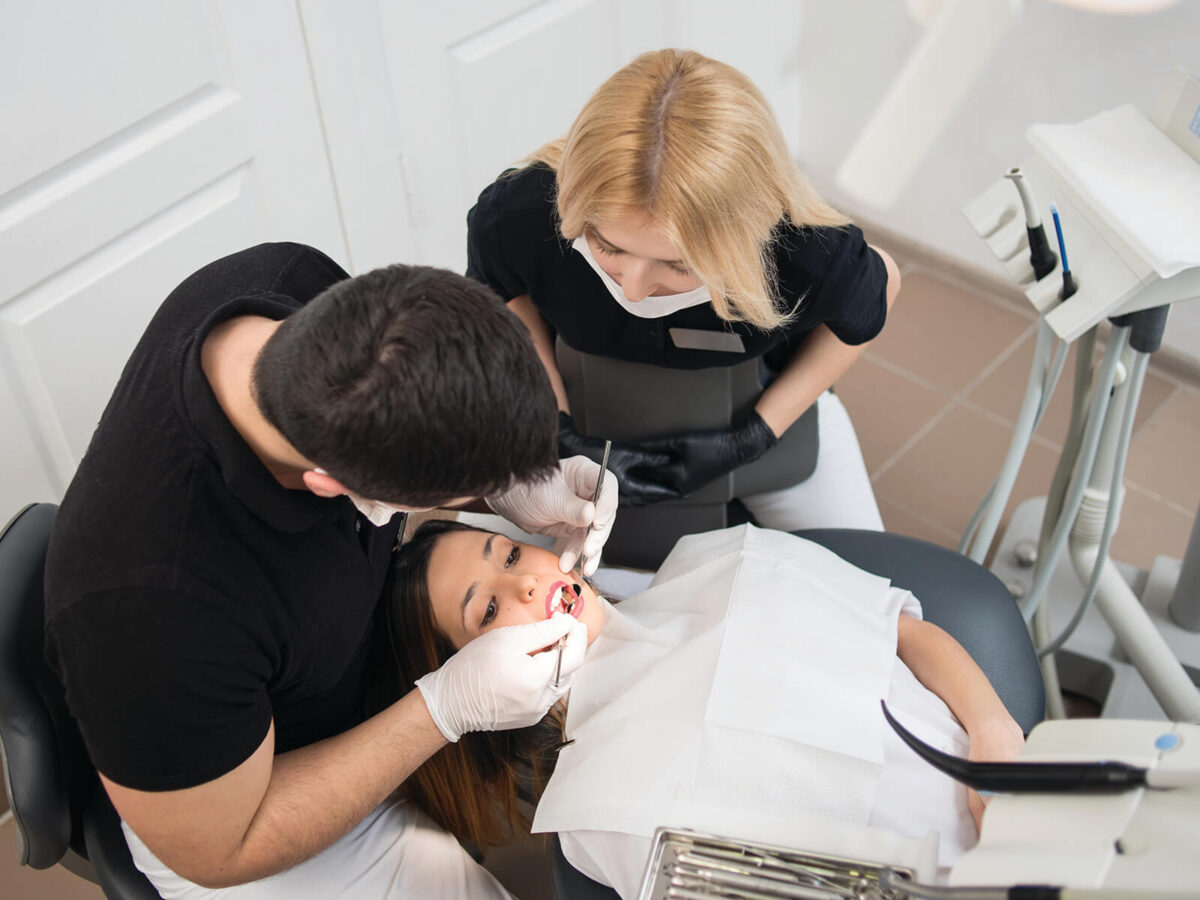Blog
Dental hygiene tips for healthy teeth & gums

Non-Surgical Root Canal: What You Need To Know
Root canal therapy is one of the most common treatments for tooth decay, yet some patients may be afraid of surgery. However, non-surgical root canal therapy is a painless and effective alternative to traditional root canal therapy. Here we will learn about the same from Lavaca Dental.
What Is Non-Surgical Root Canal Treatment?
Like a filling, a root canal involves deeper work to the tooth’s root. An expert will open the top of the patient’s tooth during a non-surgical root canal operation to access the pulp chamber and root canals. The pulp is extracted from the tooth’s interior using its root canals. After cleaning and disinfecting the tooth’s inside and its canals, gutta-percha—used in dentistry—is finally put inside.
Once this space is filled, the tooth is sealed with a large dental filling and then covered with a permanent dental crown. This returns and recruits every aspect of the internal part while making the outside of the patient’s natural tooth more unyielding.
Most endodontic procedures can be performed with local anesthesia, so the patient does not have to endure pain or discomfort.
Why People Need Root Canals?
A root canal may be necessary for various reasons, mainly because the pulp within the tooth has become infected or injured. A cavity that hasn’t been treated, an accident, an injury, or other causes could be to blame for this. Debris may penetrate the broken tooth and enter the pulp area if it fractures or breaks.
Some signs you might need a root canal include:
- Puffy gums.
- Tooth Pain.
- Darkened Tooth.
- A cavity or a decayed area in the gum
- Increased sensitivity
- Pimples on the gum.
Non-Surgical Root Canal Procedure
- Numbing the Area: The dentist will inject a local anesthetic solution to numb the area around the damaged tooth.
- Accessing the Pulp: A dental drill will be used to create a hole in the crown of the impacted tooth to extract the diseased pulp.
- Extracting the diseased Pulp: Using thin, flexible instruments called files, your dentist will remove the diseased pulp from the tooth and root canals.
- Cleaning the Root Canals: The dentist will utilize endodontic tools and equipment to clean the root canals after removing the diseased pulp. A disinfecting solution will be used to wash the root canals to remove any remaining bacteria.
- Filling the Root Canals: To seal off the root canals, your dentist will fill them with a different material called gutta-percha.
- Sealing the Tooth: The dentist will place a crown or fill the tooth to prevent bacteria from entering the tooth.
Things You Should Know About Non-Surgical Root Canals
1. Non-surgical root canals are a very intensive procedure:
It is essential to understand that when a root canal is being done, the dentist operates further down the tooth rather than in the outer layer where a regular filling is done. It is undertaken through small canals in the root, and a filling is used to shield and reconstruct the stability of the tooth.
2. Non-surgical root canals do not entail cutting or slicing through the gum tissue:
A non-surgical root canal will not involve any surgical incisions, as most people perceive it. This means that if the dentist performs a surgical root canal, he or she may be forced to open up the soft tissue to get to the root instead of drilling through the actual tooth.
3. Non-surgical root canals call for using anesthetics:
The dentist will apply regional local anesthesia on a non-surgical root canal to help ease the pain while the professional works. The nerves of the tooth are located around the root and are sensitive to any work being carried out, so measures are taken to ensure a patient is not feeling anything when the procedure is being done. There could be some discomfort and soreness as the anesthetic wears off.
Surgical root canal treatment might take time compared to the non-surgical one. Still, being more cautious and observing proper dental hygiene after the procedure is recommended. After the surgery, you will experience pain and inconvenience during the first few days after which the discomfort will start to lessen gradually.
This is very normal, and you’re bound to feel a bit uncomfortable or perhaps somewhat stiff, especially affecting the massaged part. If by any chance you feel any pain, then you might want to talk to your doctor about using a simpler pain reliever. You should also avoid applying pressure on the tooth by taking hard or sticky foods, which will slow down the healing process.
There can also be some inflammation in the specific area of the tooth, and putting an ice cube on the side of my face where the painful tooth is located for around 10-15mins every other several hours can alleviate swelling.
If you have been prescribed antibiotics before or after the procedure, please follow the instructions from your dentist. You should not stop taking the antibiotic even when facing signs of improvement, as it contributes to antibiotic resistance.
Summing It Up
Patients should follow certain ways after nonsurgical root canal treatment to prevent unnecessary complications that may fail. Avoid chewing or slurping for a couple of days, and make follow-up visits as your dentist prescribes. For more consultancy, contact Lavaca Dental.


